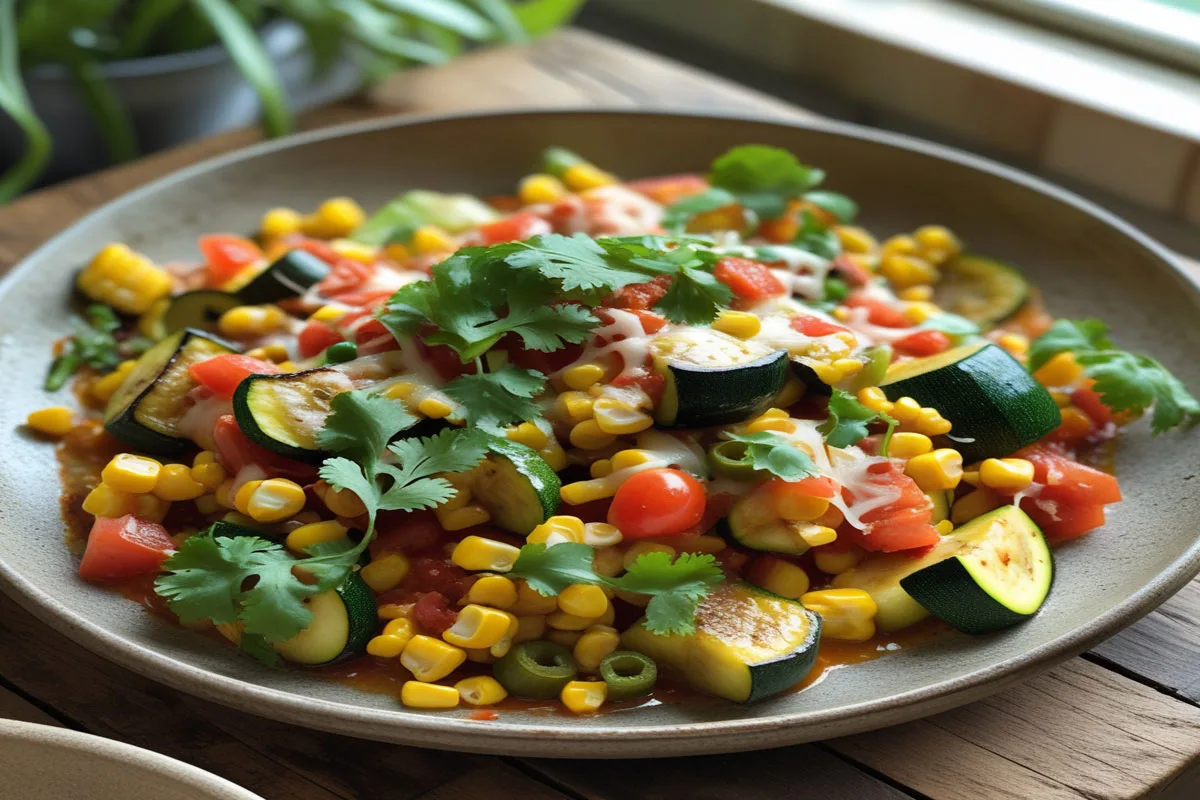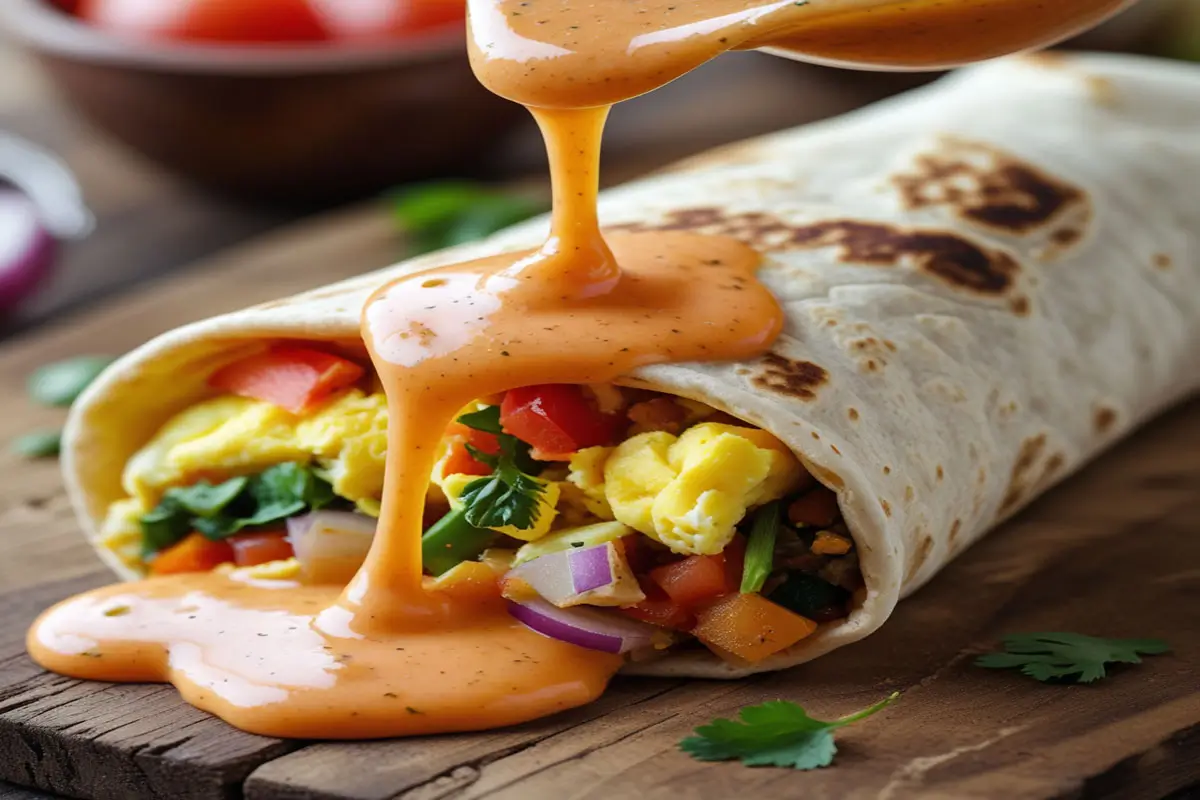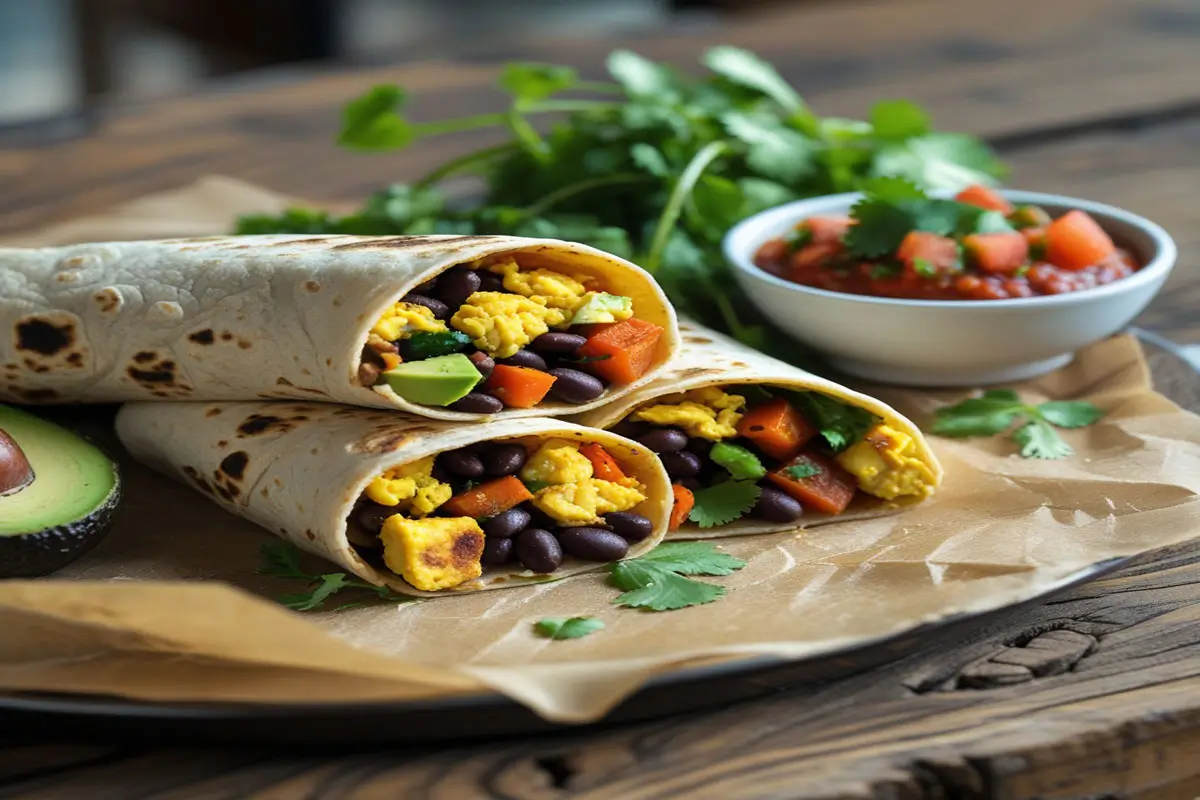Calabacitas is a delicious Mexican vegetable dish that showcases the rich flavors of summer produce. While it is often associated with the southwestern United States and Mexico, it is enjoyed in many variations across the world. This dish is perfect for those looking to add a flavorful and nutritious option to their meal repertoire.
Traditionally, calabacitas include ingredients like zucchini, corn, onions, and green chilies, making it a versatile and adaptable dish. Moreover, it offers a wonderful opportunity to embrace plant-based eating without sacrificing taste or satisfaction. Whether served as a side or a main course, calabacitas provides a fresh, vibrant option for any meal.
In this article, we’ll guide you through the ingredients, preparation methods, and variations of a classic calabacitas recipe, so you can create this delightful dish at home. With its savory yet light texture, it’s sure to become a staple in your kitchen.
Table of Contents
What Are Calabacitas and Where Do They Come From?
The word Calabacitas Recipe literally translates to “little squashes” in Spanish, referring to the zucchini or summer squash that is the base of this dish. While the ingredients in a Calabacitas Recipe can vary, the defining feature is the combination of fresh vegetables, usually with a mild heat from chilies and a touch of flavor from herbs and spices.
Originally, the Calabacitas Recipe hails from Mexico, particularly the northern regions. It is a staple during the summer months when fresh vegetables like zucchini and corn are in abundance. Over time, however, the Calabacitas Recipe has spread throughout the southwestern United States and beyond, with each region adding its unique twist to the dish.
The Calabacitas Recipe continues to evolve, often including new ingredients such as tomatoes, bell peppers, or even cheese. Nonetheless, the dish remains firmly rooted in its humble, vegetable-rich origins.
Essential Ingredients for an Authentic Calabacitas Recipe
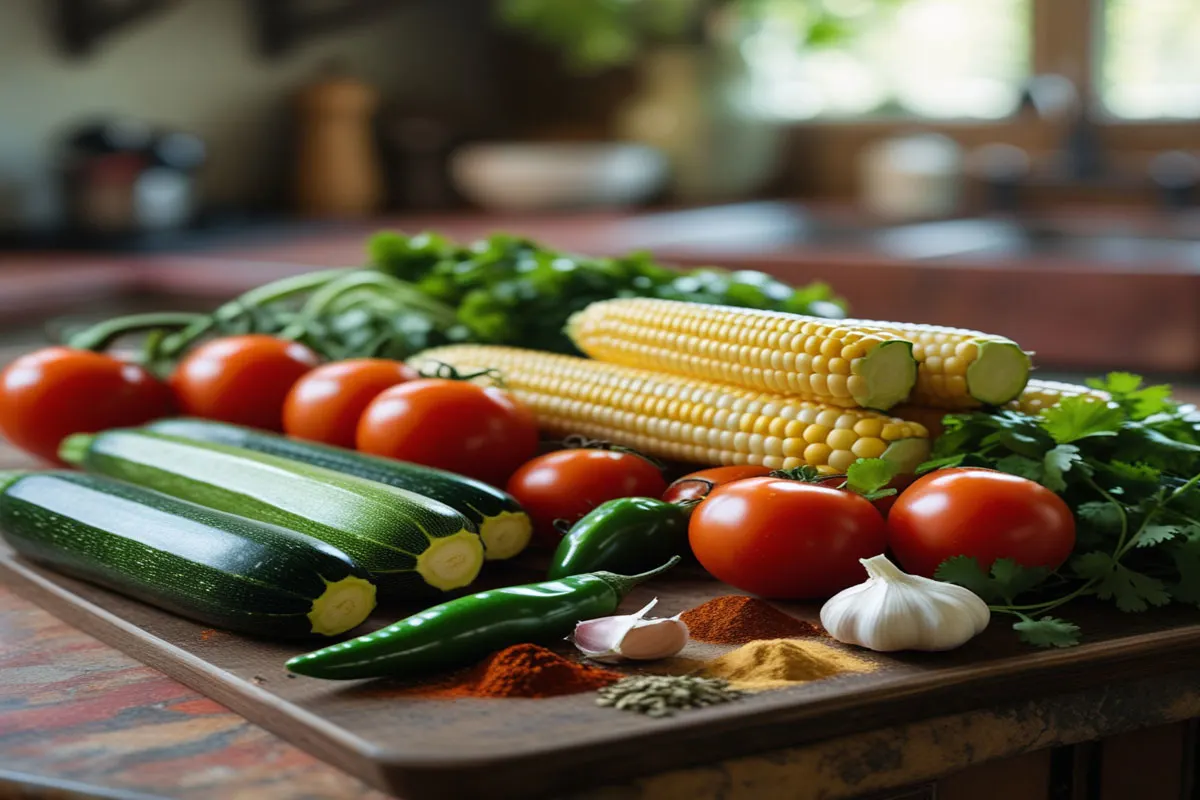
To make a traditional calabacitas recipe, it’s essential to gather the following ingredients. Each one contributes to the vibrant, hearty flavors of this dish. Let’s take a look at what you’ll need:
- Zucchini: The star of the dish, zucchini brings a mild, slightly sweet flavor and tender texture.
- Corn: Fresh corn kernels add sweetness and a slight crunch that balances the softness of the zucchini.
- Onions: Sweet onions or yellow onions work best, providing a savory base flavor.
- Green chilies: These add a mild heat, with poblano or Anaheim peppers being great choices.
- Tomatoes: Optional, but they contribute a juicy freshness to the dish.
- Garlic: Freshly minced garlic enhances the overall flavor, creating a savory backdrop.
- Olive oil: Used for sautéing and bringing everything together, this oil helps to enhance the flavors of the vegetables.
- Cilantro: Adds freshness and a vibrant green color to the dish.
- Spices: A pinch of cumin and chili powder can elevate the flavors further, creating depth and warmth.
Each of these ingredients plays an important role in achieving the perfect calabacitas recipe, so using fresh, high-quality produce will make all the difference.
Step-by-Step Guide to Preparing Calabacitas
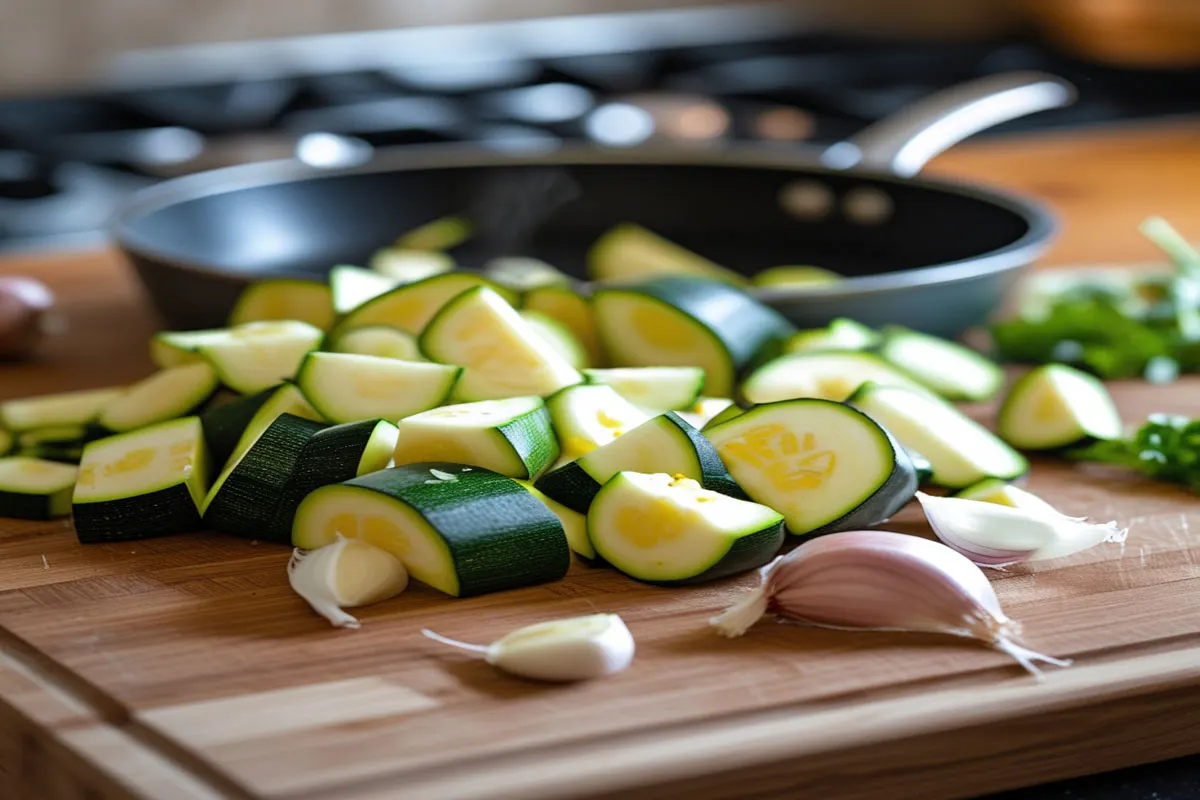
Making a calabacitas recipe at home is an easy process. Here is a simple, step-by-step guide to help you make a perfectly balanced, flavorful dish.
Preparing Your Vegetables for the Perfect Texture
Before you start cooking, it’s important to prepare your vegetables properly. Start by washing the zucchini thoroughly. Slice the zucchini into half-moons or small cubes to allow it to cook evenly. Similarly, peel and chop the onions into bite-sized pieces. For the corn, if using fresh kernels, cut the corn off the cob. If using frozen corn, ensure it is thawed before adding.
To preserve the right texture, avoid overcooking the zucchini. It should remain tender but slightly crisp, rather than mushy. Moreover, chopping all vegetables evenly ensures uniform cooking and flavor distribution.
Cooking Tips for the Ideal Flavor Blend
To get the best out of your vegetables, it’s important to cook them in stages. Start by heating olive oil in a large skillet over medium heat. Add the onions first and sauté until they become soft and translucent. Then, add the garlic and cook for about 30 seconds until fragrant.
Next, toss in the zucchini and green chilies, cooking them until tender but still retaining some bite. Finally, add the corn and tomatoes (if using), cooking them just long enough to heat through. Season with salt, pepper, and a sprinkle of cumin and chili powder for an extra kick. Be sure to taste the dish and adjust the seasoning as necessary.
Variations on the Classic Calabacitas Recipe
While the traditional calabacitas recipe is a flavorful combination of zucchini, corn, and spices, there are plenty of ways to personalize this dish. Here are a few variations you can try:
- Cheesy Calabacitas: For a richer version, sprinkle shredded cheese such as cheddar or Monterey Jack over the dish once it’s cooked. Let it melt into the vegetables for an extra layer of flavor.
- Spicy Calabacitas: Add extra heat with diced jalapeños or serrano chilies. If you like your dishes on the spicier side, this variation will satisfy your craving.
- Protein-Packed Calabacitas: Add black beans, chickpeas, or cooked quinoa for a more filling meal. These ingredients complement the vegetables and provide a complete protein source.
- Calabacitas with Avocado: Add creamy slices of avocado to the dish just before serving. It adds richness and enhances the texture.
Each of these variations provides a unique twist on the calabacitas recipe, allowing you to customize it based on your preferences and dietary needs.
How to Make Calabacitas Healthier with Simple Substitutions
Making a healthy version of calabacitas doesn’t require many changes; small adjustments can have a big impact. Here are some simple substitutions to make your calabacitas recipe even healthier:
- Use Olive Oil or Avocado Oil: Instead of butter, use olive oil or avocado oil for cooking. These oils are rich in healthy fats that support heart health.
- Swap for Low-Sodium Broth: If you like your calabacitas a little more saucy, use a low-sodium vegetable broth instead of adding extra salt.
- Add More Greens: Throw in some spinach, kale, or Swiss chard for extra nutrients and fiber.
- Opt for Dairy-Free Cheese: For a dairy-free version, use plant-based cheese or skip the cheese entirely if you prefer a lighter dish.
These small tweaks can help you create a calabacitas recipe that’s packed with nutrients while still being delicious.
Serving Suggestions for Calabacitas: Pairing Ideas and Meal Combos
Calabacitas is a versatile dish that pairs well with many other foods. Here are some great meal combinations to try:
- As a Side Dish with Grilled Meat: Serve your calabacitas alongside grilled chicken, steak, or fish for a well-rounded meal.
- With Rice or Quinoa: For a more substantial meal, pair your calabacitas recipe with a side of brown rice or quinoa.
- Topped with Fried Eggs: Add a fried egg on top of your calabacitas for a delicious breakfast or brunch.
- In Tacos: Use calabacitas as a filling for soft corn tortillas, adding some salsa and avocado for a fresh taco option.
No matter how you choose to serve it, calabacitas will enhance any meal with its fresh, vibrant flavors.
Storage Tips: How to Keep Calabacitas Fresh for Longer
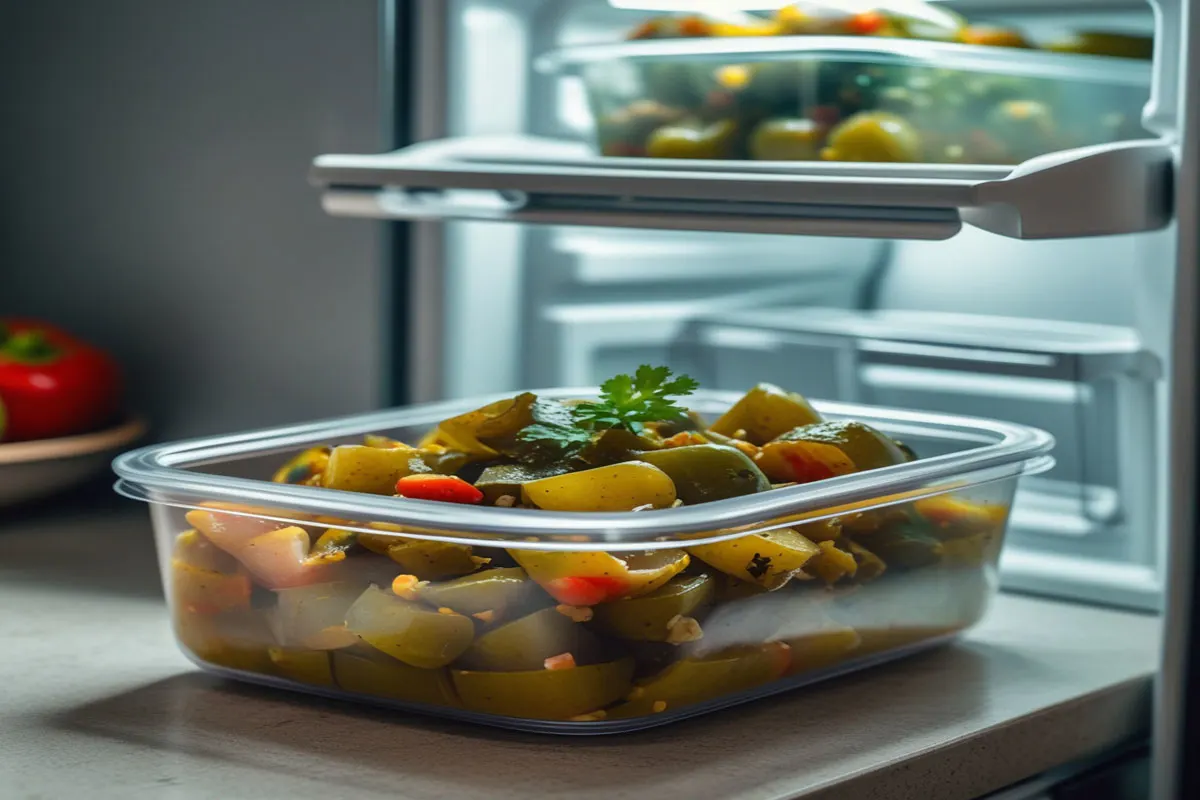
If you have leftovers, proper storage can help keep your calabacitas recipe fresh for longer. Here are some tips for storing and reheating your dish:
Refrigerating Your Calabacitas for Maximum Freshness
Store leftover calabacitas in an airtight container in the refrigerator for up to 3-4 days. Be sure to let the dish cool completely before refrigerating to avoid moisture buildup. If you want to maintain its flavor, it’s best to avoid storing it with the avocado if you’ve added it.
Freezing Calabacitas: A Guide to Long-Term Storage
To freeze calabacitas, place the cooled dish in a freezer-safe container or zip-lock bag. Remove as much air as possible to prevent freezer burn. Calabacitas can be frozen for up to 3 months. When ready to enjoy, simply reheat it in the microwave or on the stovetop.
Why Calabacitas is a Versatile Dish for Every Lunch
Calabacitas is not only a healthy and delicious choice but also incredibly versatile. Whether you’re looking for a quick and satisfying lunch or a flavorful dish to enjoy with family or friends, calabacitas can be easily adapted to fit any occasion. It’s a great option for busy weeknights, casual gatherings, or even when you want something light yet filling for your midday meal.
This dish is also highly customizable to suit various dietary needs, including vegetarian, vegan, and gluten-free options, making it an inclusive choice for everyone. Plus, its vibrant colors and rich flavors make it an appealing and nutritious lunch that will satisfy guests of all ages.
Perfect for a cozy evening, try our Roasted Basil Chicken and Onion Soup with a side of creamy Scalloped Potatoes with Cheese Powder.
FAQ:
What are Calabacitas made of?
Calabacitas is traditionally made with zucchini, corn, onions, green chilies, garlic, and sometimes tomatoes. It’s a versatile vegetable dish that can be seasoned with cumin, chili powder, and cilantro. The recipe can vary, but these ingredients form the base of an authentic calabacitas recipe.
Is calabacita the same as zucchini?
While calabacita refers to a specific dish, it is often made with zucchini (also called summer squash). Calabacita translates to “little squash” in Spanish, and zucchini is the most commonly used vegetable in this dish. However, calabacitas can also include other types of squash or vegetables depending on regional variations.
What goes well with Calabacitas for dinner?
Calabacitas pairs well with a variety of dishes. For a hearty meal, serve it with grilled chicken, steak, or fish. It also complements quinoa, brown rice, or tacos. For a lighter option, enjoy it with a side of avocado or salsa for added flavor.
What cheese goes in Calabacitas?
The best cheeses for calabacitas are cheddar, Monterey Jack, or queso fresco. These cheeses melt well and complement the fresh, savory flavors of the dish. If you prefer a dairy-free version, you can also use plant-based cheese.
What is Mexican ricotta cheese called?
Mexican ricotta cheese is often called requesón. It is a soft, fresh cheese similar to ricotta, commonly used in Mexican dishes like calabacitas, tamales, and quesadillas. Requesón is a mild cheese that works well in savory dishes.
Conclusion: Enjoying Your Homemade Calabacitas
In conclusion, calabacitas is a flavorful, nutritious, and versatile dish that can easily become a staple in your kitchen. By following our calabacitas recipe, you can create a dish that’s full of fresh vegetables, hearty textures, and bold flavors. Whether you enjoy it as a side or main course, with variations or the traditional version, calabacitas will never disappoint.
Take the time to experiment with different ingredients, seasoning, and serving options. Enjoy your calabacitas recipe today and share it with family and friends!

